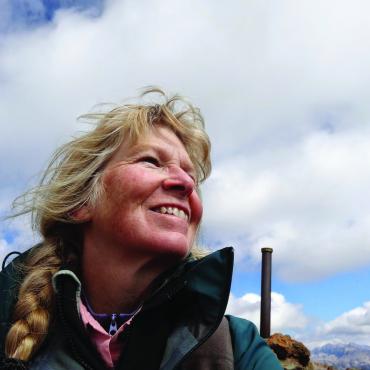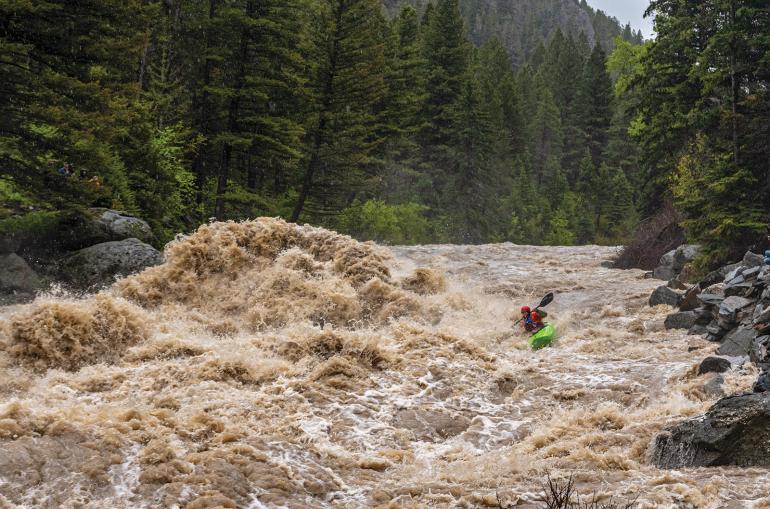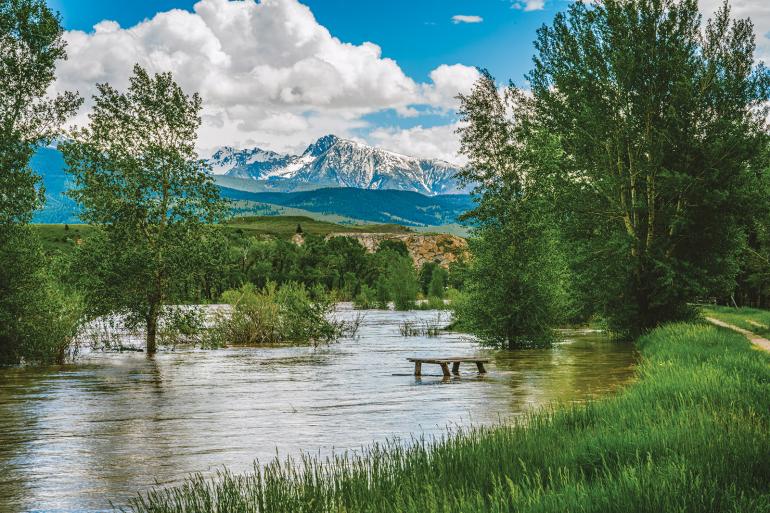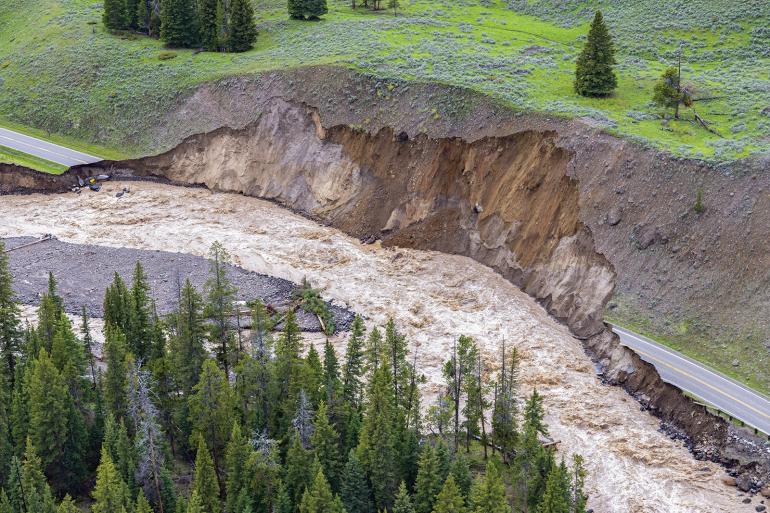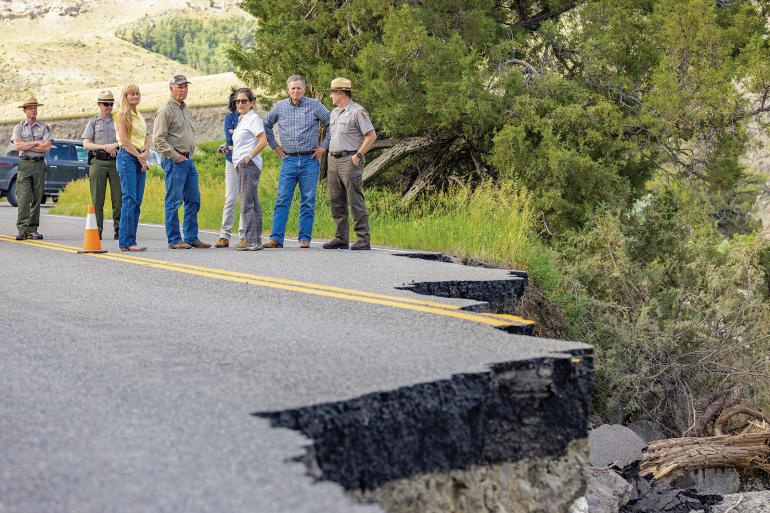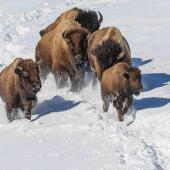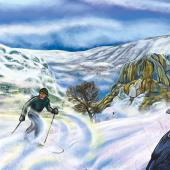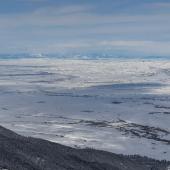High Water
Assessing the 2022 Yellowstone floods.
Much like the Yellowstone fires of 1988 for an earlier generation, each of us has a distinct image seared into our memory from last June’s Greater Yellowstone floods. Many questions linger in the wake of the flooding, and in the process of answering them, we reflect on what occurred, why, and both the short- and long-term effects.
What Happened?
In short, a weather event, known as an atmospheric river, caused a massive amount of rain to fall on a melting snowpack, resulting in the flood. More specifically, a heavy snowfall in the last week of May boosted the Snow-Water Equivalent (SWE), or amount of water held in the snowpack, augmenting the already full-swing runoff event. Then, the following weekend, a rain-on-snow event further increased the amount of water draining through the Yellowstone catchment. “As soon as the snowpack ‘ripens,’ or reaches zero degrees Celsius,” explains meteorologist Michael Richmond, “the entire snowpack is melting, and runoff will not stop. Most of the snowpack in the Greater Yellowstone Ecosystem was in that state when the atmospheric river came in. And, with very high snow levels above 11,000 feet, the rain was falling on a ripe snowpack, thereby enhancing runoff.”
Additionally, the ground was already saturated, according to a recently published article titled “When Rivers Break,” by Ally Mars, a graduate student studying stream ecology in Yellowstone National Park. The magnitude of the rainfall, combined with saturated soils at lower elevations, resulted in the devastating floods. The National Weather Service estimates that anywhere from 0.8 to 5 inches of rainfall, and 2 to 5 inches of SWE melt, occurred June 10-13. In past cases, similarly-sized storms occurred over several days and fell on drier soils, which absorbed much of the rain and slowed runoff.
Can It Happen Again?
“Atmospheric river events are expected to become stronger, or more wet, with the warming oceans, enabling more moisture to be evaporated into a warmer overlying atmosphere,” Richmond explains. In addition, Richmond predicts the snowline will rise to higher elevations, and we can expect more rain at high elevations—even in winter. (For more on this, see “Shifting Focus” by NPS Hydrologist Erin White at the bottom of this article).
It also takes time for precipitation falling in the watershed to reach the river, where it is measured by USGS stream gauges. By the time the gauges register a dramatic flow increase, scientists have a very small lead-time to provide alerts that flooding is possible. Using better precipitation forecasts, however, they hope to extend the alert time to a few days before a flood occurs in the future.
Ecological Consequences
There was direct damage to flora and fauna, concentrated around riparian corridors. Streambanks, where kingfishers nest, were swept away. Riparian vegetation was lost, at the expense of many insect species, including aquatic beetles, damselflies, butterflies, dragonflies, and stoneflies, which utilize the vegetation for a portion of their lives. The diversity of insect life in riparian areas is the number-one attraction for birds and amphibians, and their populations will consequently suffer as well.
Stream channels were straightened, and the natural, “healthy” sinuosity of the channels was lost. “While stream channels are always changing,” says hydrogeologist Joel Adams, “the flood event pushed them far out of equilibrium, and we can expect accelerated channel movement in the near-term as the streams adjust to a new state of quasi-equilibrium.”
But it’s not all bad news. Species like cottonwoods are born from floods, requiring the wet soils of a meandering floodplain to regenerate. And, interestingly, skiers along Soda Butte Creek nicknamed the new log-jams “Home Depot for Beavers,” as they observed beavers already busy building dams, assisting the recovery process of these systems, and eventually, the return of displaced species.
Social Impacts
We humans are intrinsically tied to the landscape, whether for sustenance, livelihood, recreation, or spiritual vitality. Like our animal brethren, we have built our lives in river bottoms, sometimes altering the rivers’ natural functions. The floods hit us hard, emotionally, with devastating consequences for many.
“We have to look at how we design certain assets around not only flood events, but geothermal activity, earthquakes, and wildfires,” says Bob Kammel, chief of Professional Services at Yellowstone National Park. “We need to design our infrastructure with these events in mind, knowing that they are going to happen with greater frequency, greater intensity, and with a greater impact,” he continues. In essence, the past is no longer a good indicator of the future.
The silver lining, of course, was watching communities rise up to help. Those recovery efforts can’t and won’t be limited to the summer of 2022.
Continued Education
Watch an informative and interesting seminar hosted by Steve Hostetler, lead author of the USGS “Greater Yellowstone Climate Assessment.” In the seminar, Steve explains the events leading up to last June’s rain-on-snow event, as well as its broader relationship with atmospheric rivers.
Traute Parrie is the former Beartooth District Ranger for the Custer-Gallatin National Forest.
Shifting Focus
Based on historic streamflow data, last June’s flood was a 500-year event. This designation is misleading, though, because it inherently assumes the underlying conditions are stationary. In the Greater Yellowstone Area, we have data to suggest atmospheric conditions contributing to precipitation, runoff, and streamflows are changing and, consequently, so is the risk of flooding. A recent climate assessment led by the USGS found that peak runoff occurred approximately 12 days earlier in 2018 compared to the 68-year average. And looking forward, model simulations through the year 2100 predict a 44% loss of snowpack in the upper Yellowstone watershed. We must be careful interpreting these numbers, however. The snowpack projections (which is not the same as snowfall) are based on predicted snow-water equivalent depths on April 1. That doesn’t necessarily mean there’s less snowfall. In fact, models predict a 9% increase in precipitation (rain and snow combined) in the watershed. In essence, these numbers mean we can expect warming temperatures to melt accumulated snow at a higher rate, leading to a more concentrated, earlier spring runoff. Interestingly, however, the 2022 flood peak was not an “early” peak. It was approximately normal over the period of record at the Corwin Springs stream gauge. As conditions change moving forward, we must continuously re-evaluate the probability of occurrence of extreme events.—Erin White, NPS hydrologist

